
Weaving Rya
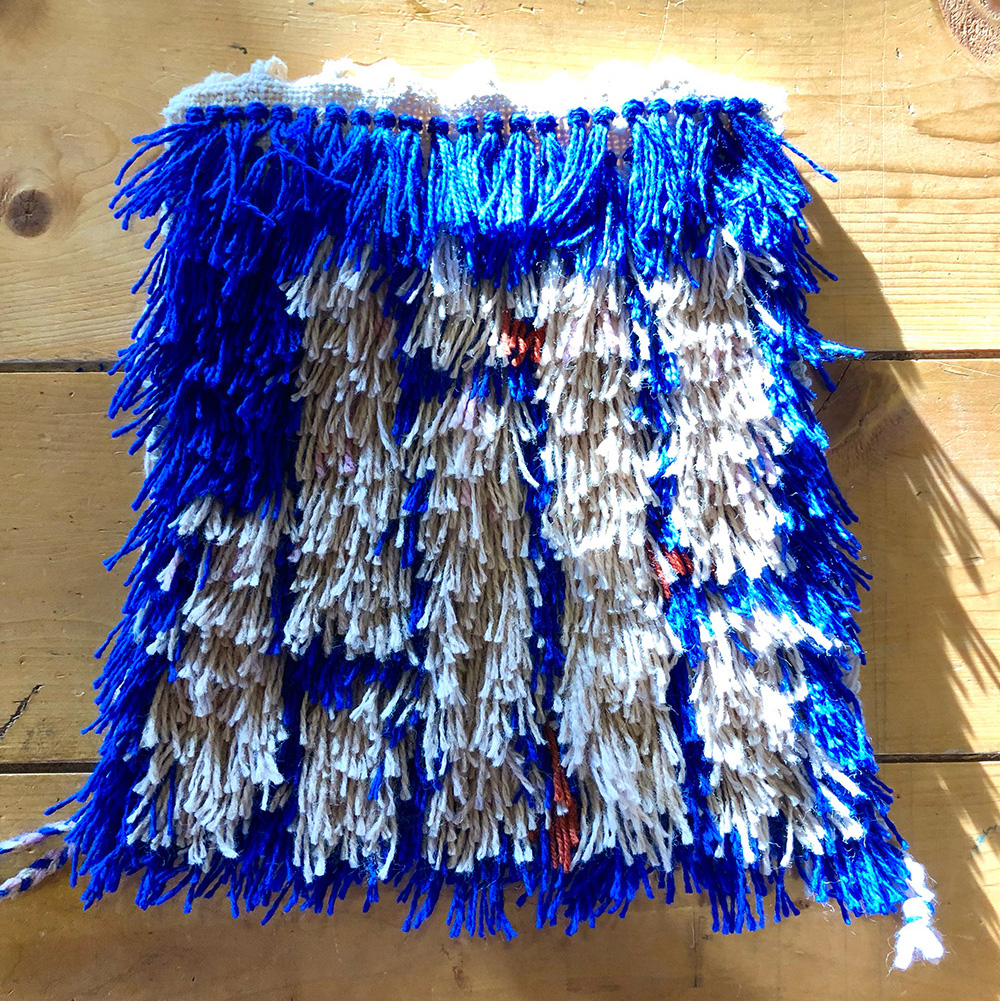
In her latest blog post, Resident Artisan Christine Novotny talks about her experience in a recent Rya Weaving course and looks ahead to future weavings.
A few weeks ago I was lucky to take Melba Granlund’s class “Rya on the Warp Weighted Loom.” I have been following the resurgence of pile rugs over the past few years, an exciting move toward high-texture rugs and wall hangings in contemporary designs. My greatest association with rya and rugs is big shag carpets from the 60s and 70s, but they have a much deeper past, and a new contemporary twist!
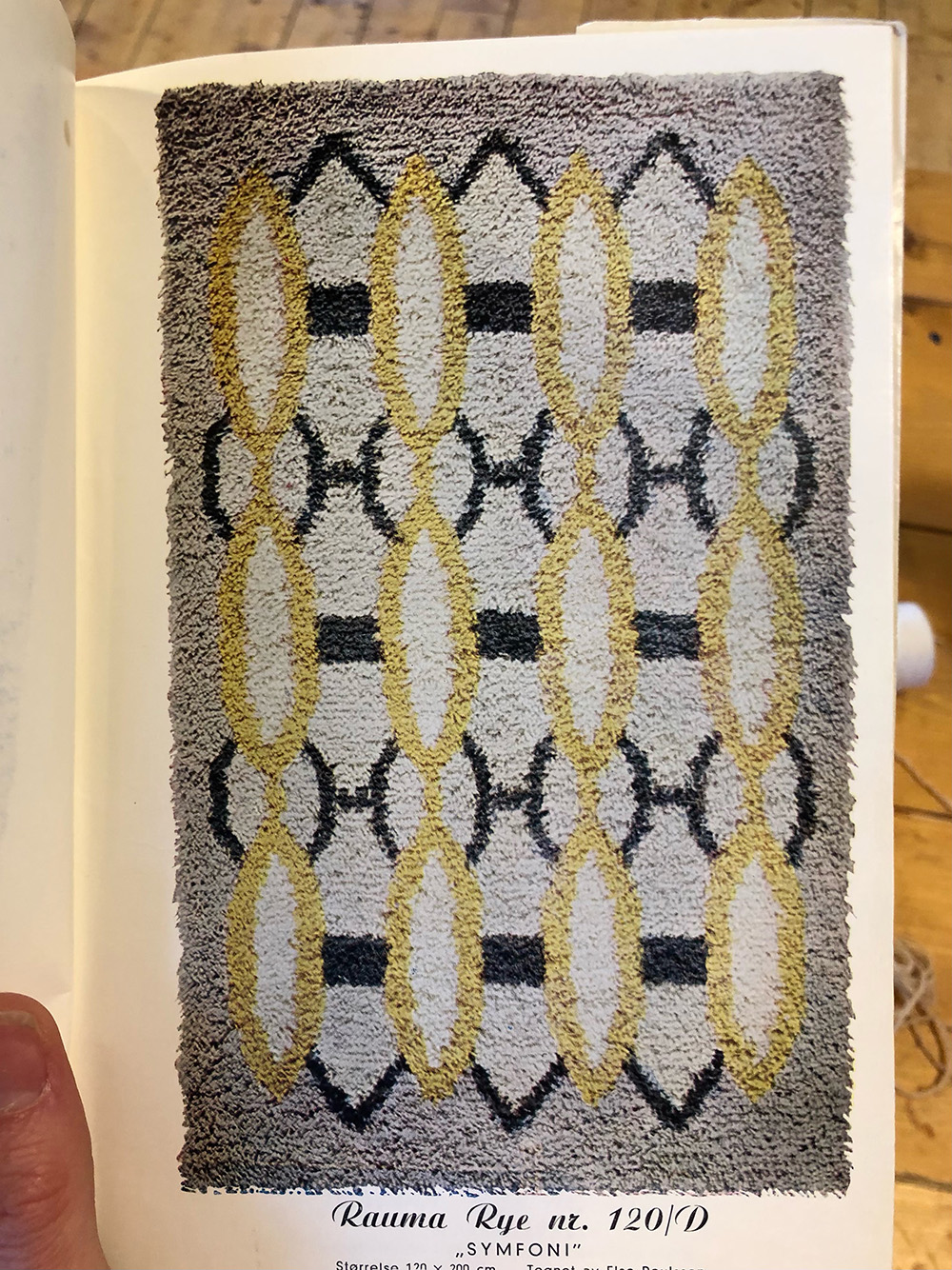
Beautiful rya rug from a book in Melba’s class
Rya (pronounced ree-uh) is a type of hand-knotted pile rug, of which there are many kinds. Oriental rugs, persian rugs, “shag” carpets, all are woven with short lengths of fiber that are knotted around the warp. The fibers are tied in a ghiordes knot around a few warp ends at a time across the length of the cloth.

Diagram of a ghiordes knot
In between each row of knots, a few rows of plain weave are woven to sandwich the knots into place and provide strength. The pile (or fringy side) builds up based on how long the tails are, and how much plain weave is woven in between. In oriental rugs or swedish flossa rugs, the pile is short, and there’s not much plain weave woven in between, so the fibers stick straight up. In rya, the tails can be longer with a bit more plain weave in between, which can cause them to lay a bit flatter, but still nice and poofy!
Ryas were made with a long pile of knotted woolen yarns giving them a shaggy appearance with great insulating qualities. According to the material in Melba’s class, the earliest evidence of rya is in Prussia and dates to the 5th century A.D., but likely began long before that. Ryas were used on the floor for cushioning with the pile (or shaggy) side up, and as bed covers, with the pile side down. They were made to mimic fleeces, and were far superion to animal skins because the hide would not rot over time as it was exposed to water, as it was in Norwegian boat ryas for fishermen.
Eventually, other more decorative designs began forming in rya, and rya became a wonderful opportunity to work with patterns and color. Because of its “pixelated” nature (x amount of knots/sq inch), all sorts of designs can be created by tying knots of different colors in different patterns, or combining yarns together for different feels. Contemporary weavers like Miriam Parkman from Stockholm, Sweden are creating stunning ryas with all sorts of beautiful organic and swirling designs!
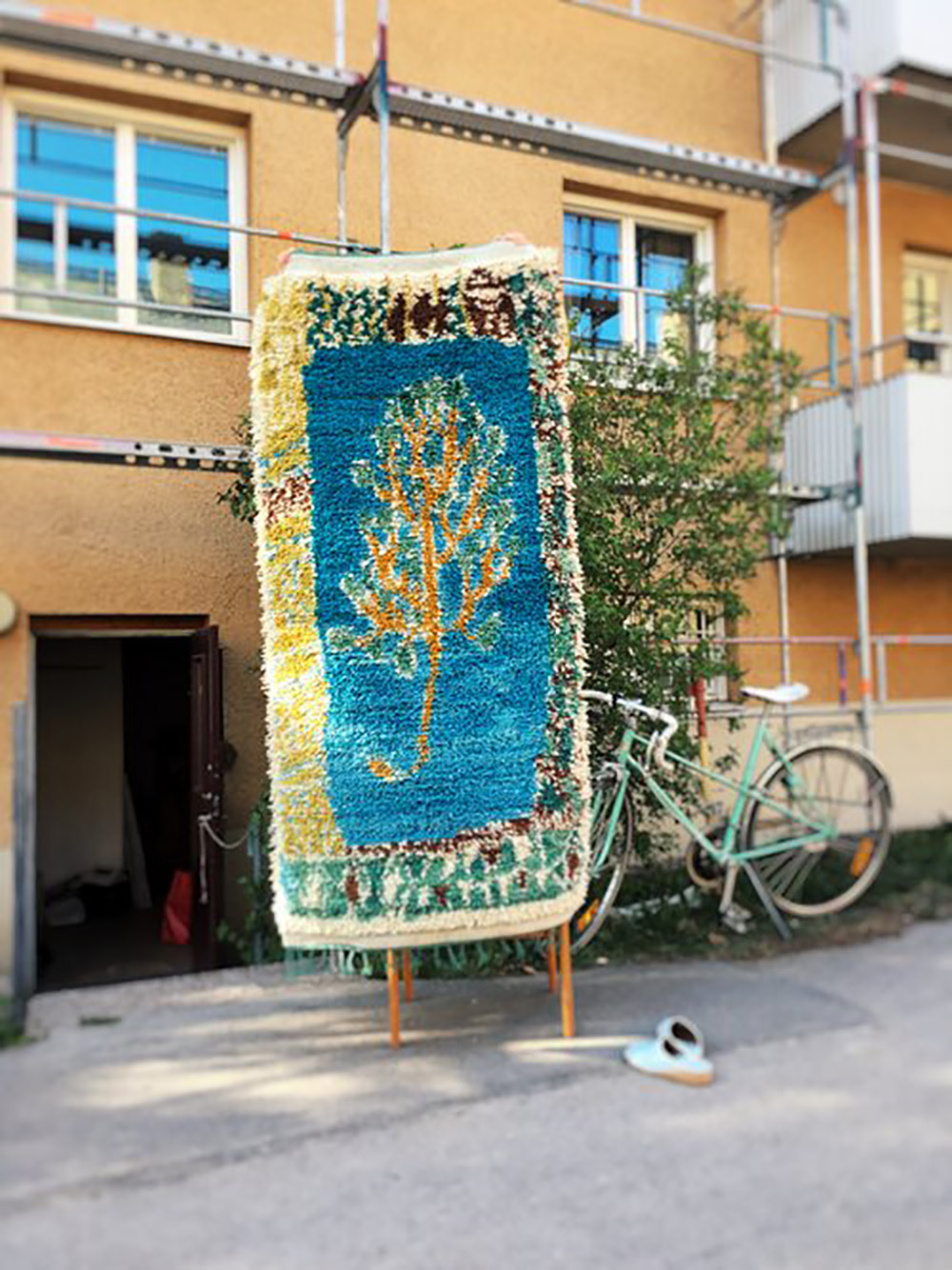
Miriam Parkman’s rya piece “Sage,” for purchase on her website!
I have done some experimenting with rya, and it’s shorter pile rug cousin, flossa, but all my work was on a floor loom. Here’s some early experiments of flossa on my loom from last year. I used a really silky wool that I have tons of cones from a carpet company that went out of business many years ago. The bars on each side is a framing motif I saw on a Marta Mass Fjetterstrom carpet from a ways back.

Flossa on the loom
My rya in class was very experimental, and I learned a lot about warp weighted looms - but that’s for another blog post! Here’s a picture of my work in progress on the table top warp weighted loom, and my finished piece after I pulled it off the loom. Warp weighted looms are notorious for draw-in, which is why my piece came out shaped like a rhombus! I’ll have to be more diligent next time I work on this type of loom!
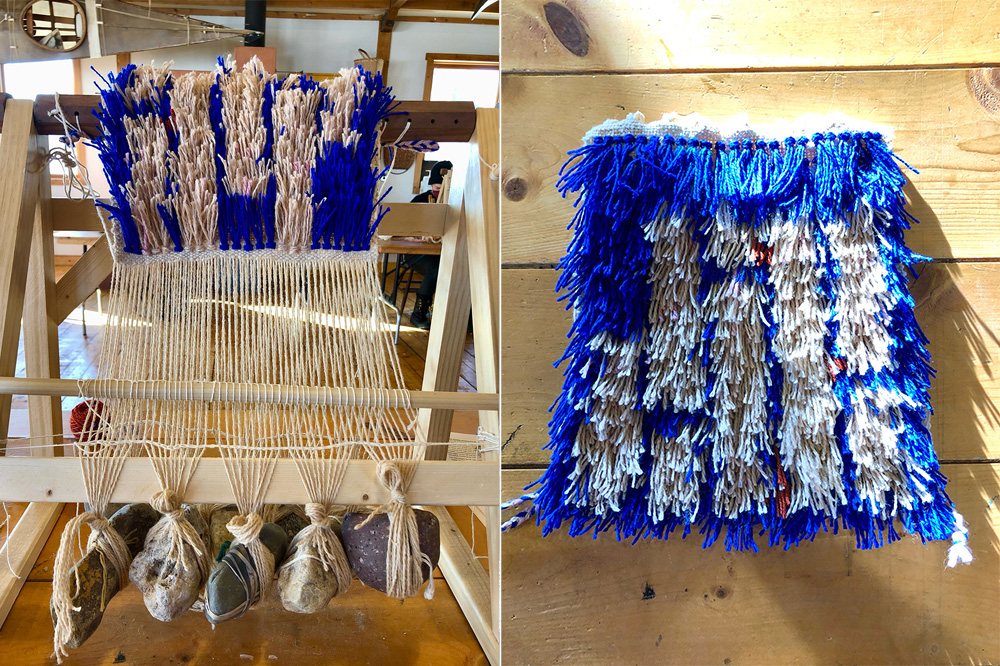
I am excited about making a rya with shorter piles and different yarns for the next go round. I also will get to use my countermarch floor loom which keeps tension evenly, and use my batten to beat rather than beating it down by hand. I am using design guides in Miriam Parkman and Arianna Funk’s book “To Weave” that was released in English just a few months ago. Here’s a picture of me pulling out a ton of naturally dyed rug wool and starting to make some plans for my rug!
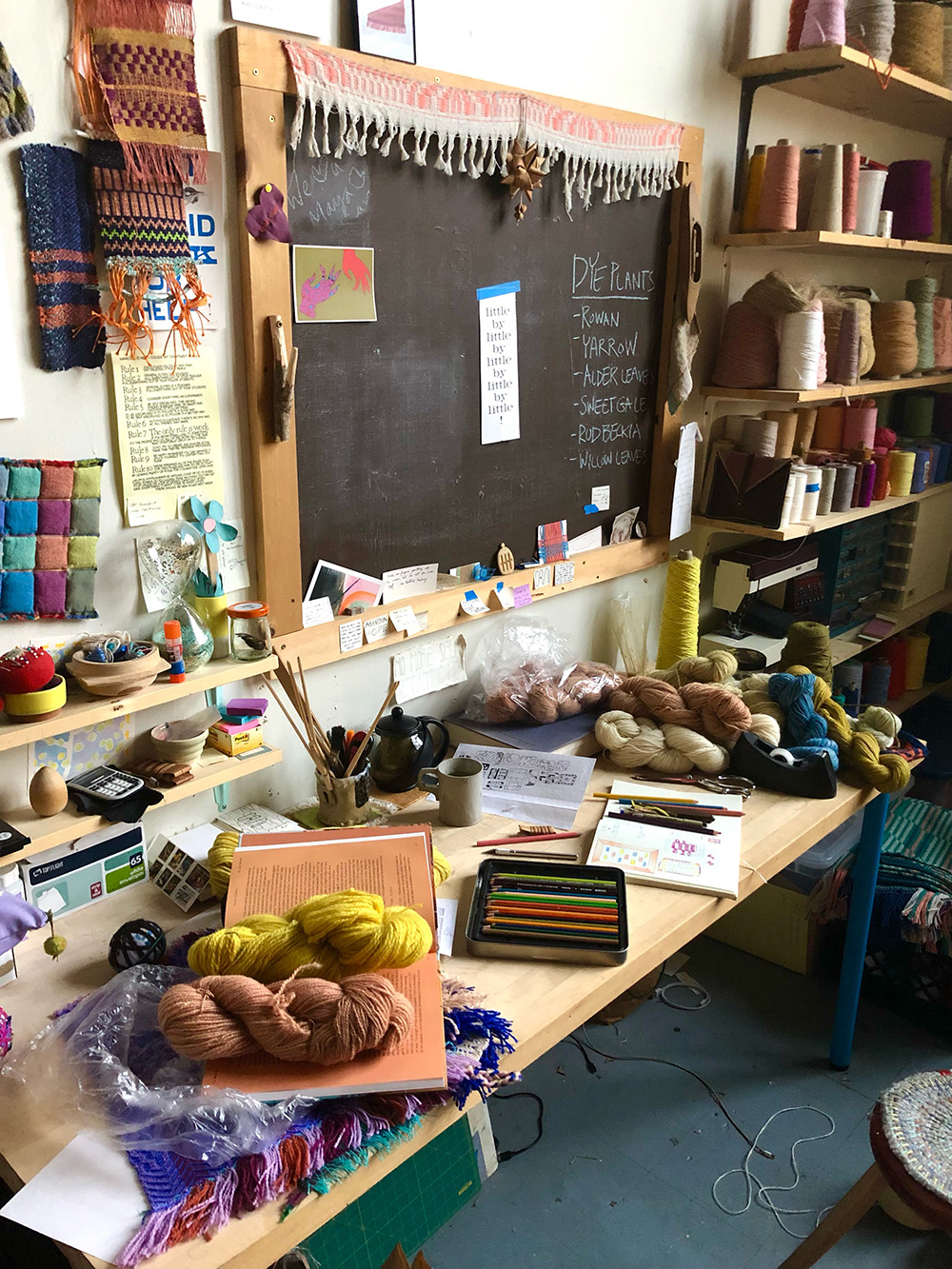
Yarn on yarn on yarn
I am looking forward to working on this rug in my final months of the Artisan Development Program! Perhaps I’ll write my final blog about it. Thank you to Melba Granlund for this class!